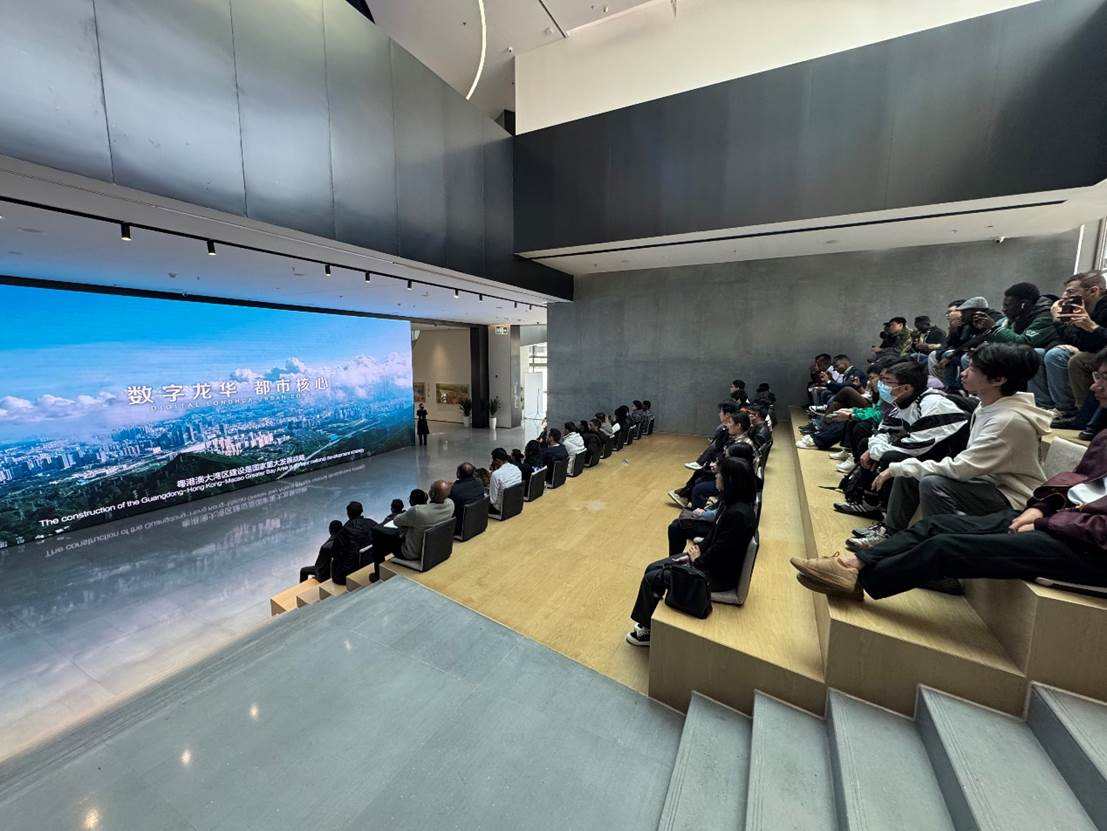(Chu Yifang) On January 25, 2025, the first auspicious snow of winter blanketed north China Region. The 58 international students from the 2024 cohort of Mofcom Program could hardly hide their excitement about their two-week trip to south China. Aminada Bah, Mohamed Thoronka, Jalloh Chernor Gurasiue, Edward David Thoronka from Sierra Leone, and Arthur K. Johnson Jr. from Liberia, among others, shared their reflections in the group chat after returning from the visit.
Jalloh Chernor Gurasiue said: we have safely returned to campus, and I am filled with gratitude as I reflect on our incredible two-week field trip to Wuhan and Shenzhen. This journey was not just educational but transformative, offering us a firsthand look at the innovation driving the tech industry.
To the companies we visited, thank you for warmly welcoming us and showcasing your groundbreaking work. Your innovations and dedication serve as a powerful motivator for us to strive for excellence in our own pursuits.
To the sponsors, the School of Software Engineering, and everyone who supported us, thank you for making this trip possible. Visiting top-tier companies inspired us to dream bigger. This trip has taught me the power of innovation, collaboration, and sacrifice. I return home with cherished memories and a heart full of gratitude.
The students' reflections indicate that this was an unforgettable journey into the world of technology and innovation.
Wuhan: Exploring the Highland of Technological Innovation
The first stop was Wuhan, a technological hub in central China that attracted significant attention from the international students. The delegation first visited the Wuhan East Lake High-Tech Development Zone, known as the "Optics Valley of China." As a national high-tech industrial development zone, it is home to numerous high-tech companies and research institutions. The students visited several renowned tech companies, gaining in-depth insights into cutting-edge technologies in fields such as optical communication, big data, artificial intelligence, and cloud computing. The visit focused on the China Information and Communication Technology Group Corporation, an enterprise directly supervised by the State-owned Assets Supervision and Administration Commission (SASAC), and Dameng Database Co., Ltd., a company listed on the Shanghai Stock Exchange's STAR Market.
Founded in 2000, Wuhan Dameng Database Co., Ltd. is a leading domestic database product developer and a key driver of the development of the database software industry in China. The company provides a range of database products and related technical services, including database software, cluster software, cloud computing, and big data solutions, aiming to become a top-tier global provider of full-stack data products and solutions. Dameng has mastered core technologies in data management and data analysis, possessing independent intellectual property rights for all major product lines. Dameng's solutions have been successfully applied in dozens of sectors, including government, finance, energy, aviation, and telecommunications.

Figure 1: Visiting Wuhan Dameng Database Co.
China Information and Communication Technology Group Corporation (China InfoComm) was formed through the merger of the Wuhan Research Institute of Posts and Telecommunications (FiberHome Technologies) and the Telecommunications Science and Technology Research Institute (Datang Telecom Group). It is an enterprise directly supervised by SASAC. China InfoComm is the birthplace of China's optical communication industry and one of the main proposers of international standards for mobile communication with core intellectual property rights. It is a globally renowned provider of information and communication products and comprehensive solutions. The group consists of six listed companies and over 20 non-listed companies, focusing on six major areas: optical communication, mobile communication, optoelectronics and integrated circuits, cybersecurity and special communication, intelligent applications, and data communication.

Figure 2: Visiting China Information and Communication Technology Group Corporation
In Wuhan, the students also experienced one of China's largest subway stations, the Guanggu Square Station. As the largest transfer station in Wuhan's subway system, it has over 20 exits, resembling an underground maze. Riding the East Lake High-Tech Zone's elevated rapid transit line and Baidu's autonomous taxi service, "Apollo Go," also provided the students with exciting and novel experiences of cutting-edge technology.
Shenzhen: Experiencing the Vitality of the Innovation Capital
The second stop was Shenzhen, a pioneer city in China's reform and opening-up, often referred to as the "Silicon Valley of China."
The students visited globally renowned tech giants such as ZTE, Hytera, and Han's Laser, gaining firsthand experience of these companies' leading positions in the global tech industry. The technological and product displays, as well as the actual production line operations of industry leaders like United Aircraft, China Coal Robotics, and W-tech Automation, left a deep impression on the students. They also visited Meituan's Shenzhen Big Data Operations Center, engaging in face-to-face discussions with company staff. At the Longhua District Urban Exhibition Hall, the students learned about the rapid economic development of Longhua District and China's innovation and entrepreneurship ecosystem through videos, naked-eye 3D displays, and on-site exhibitions of innovative products.

Figure 3: Visiting the Longhua District Urban Exhibition Hall in Shenzhen